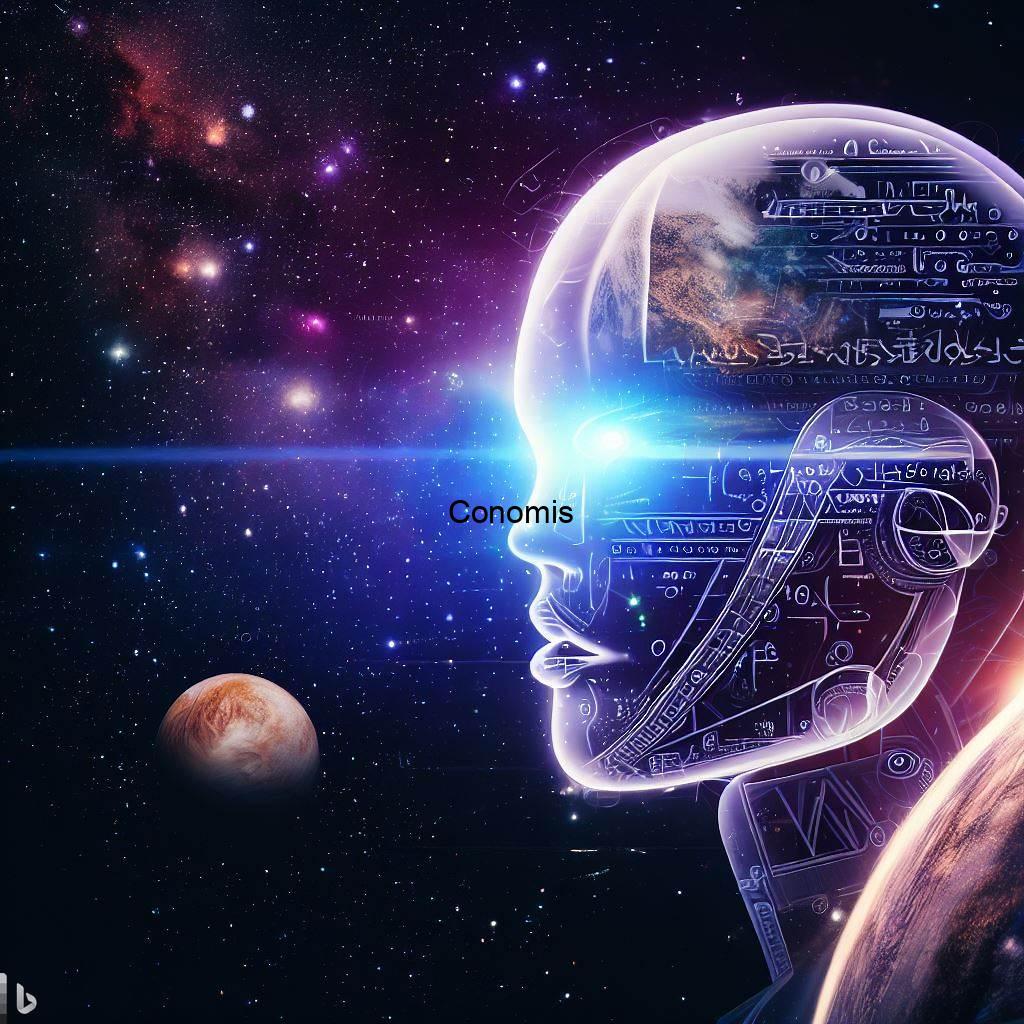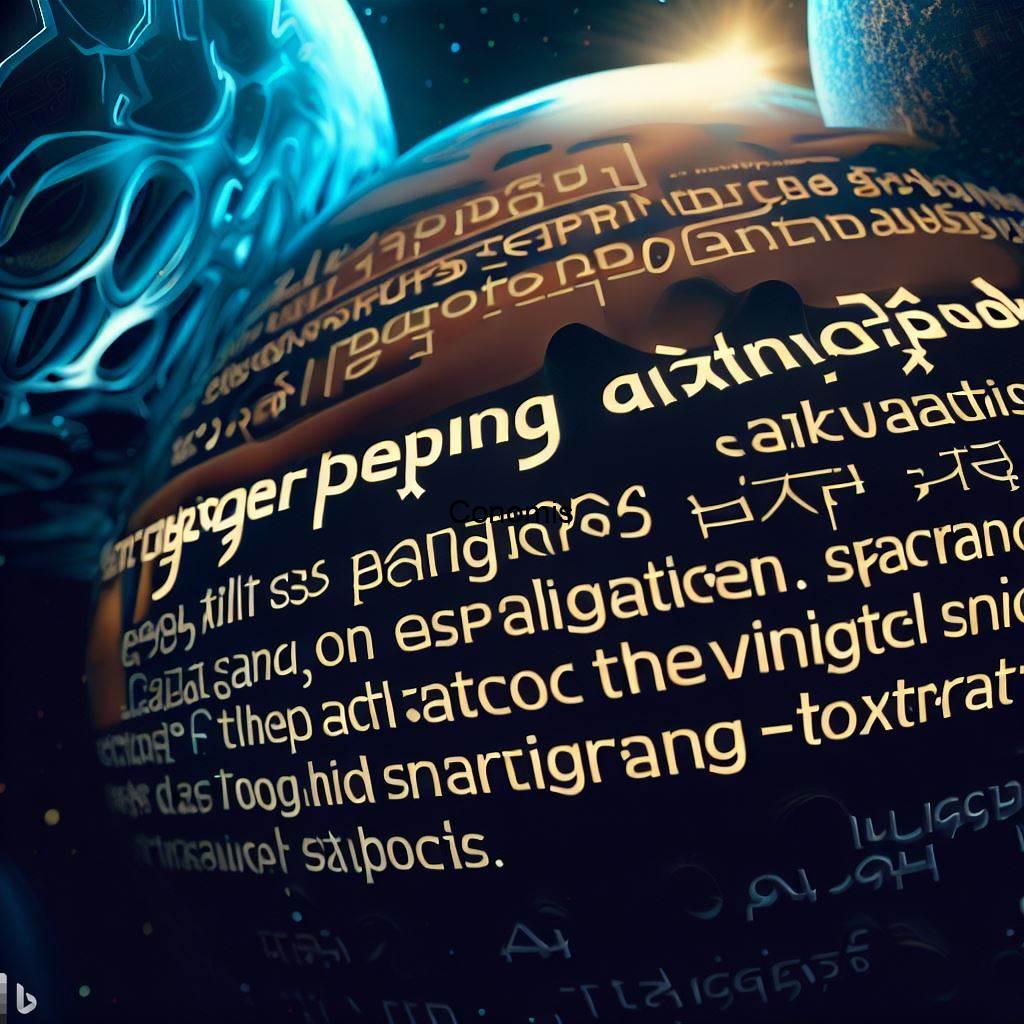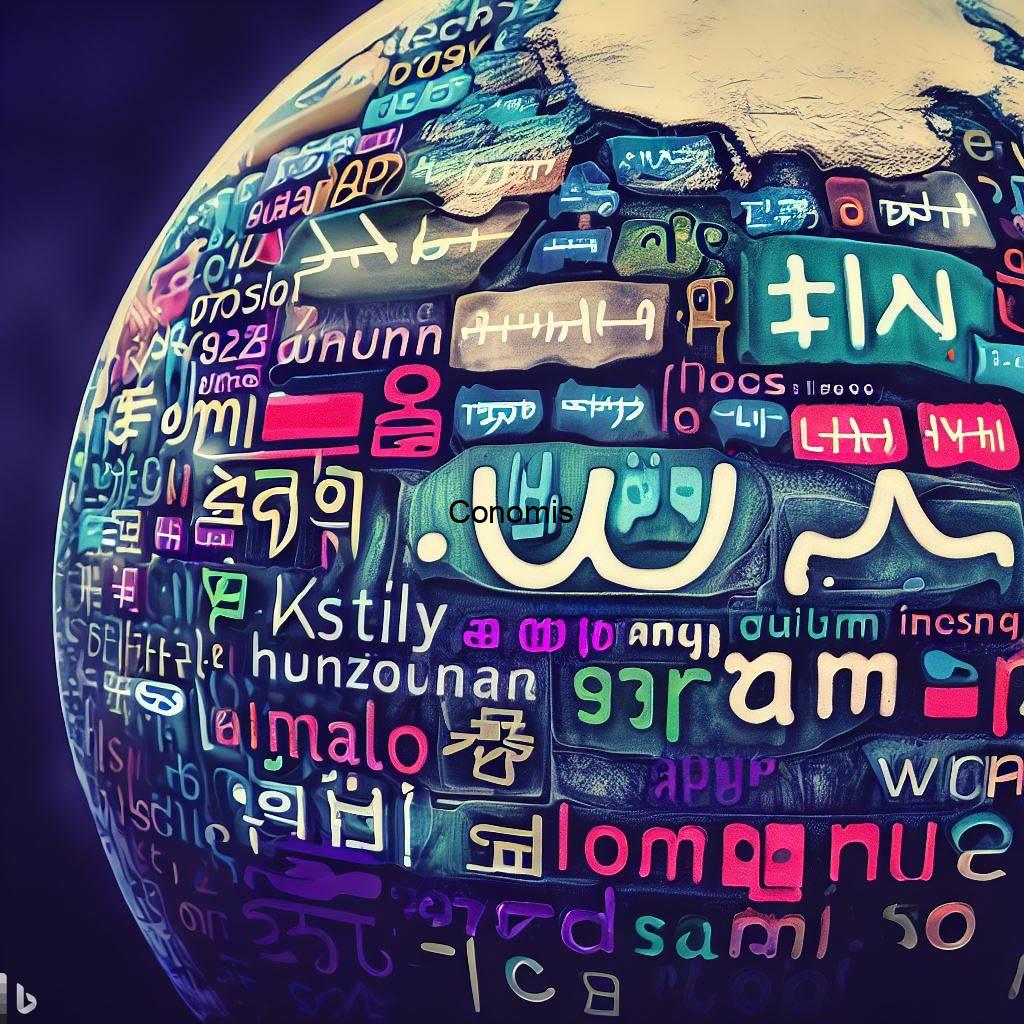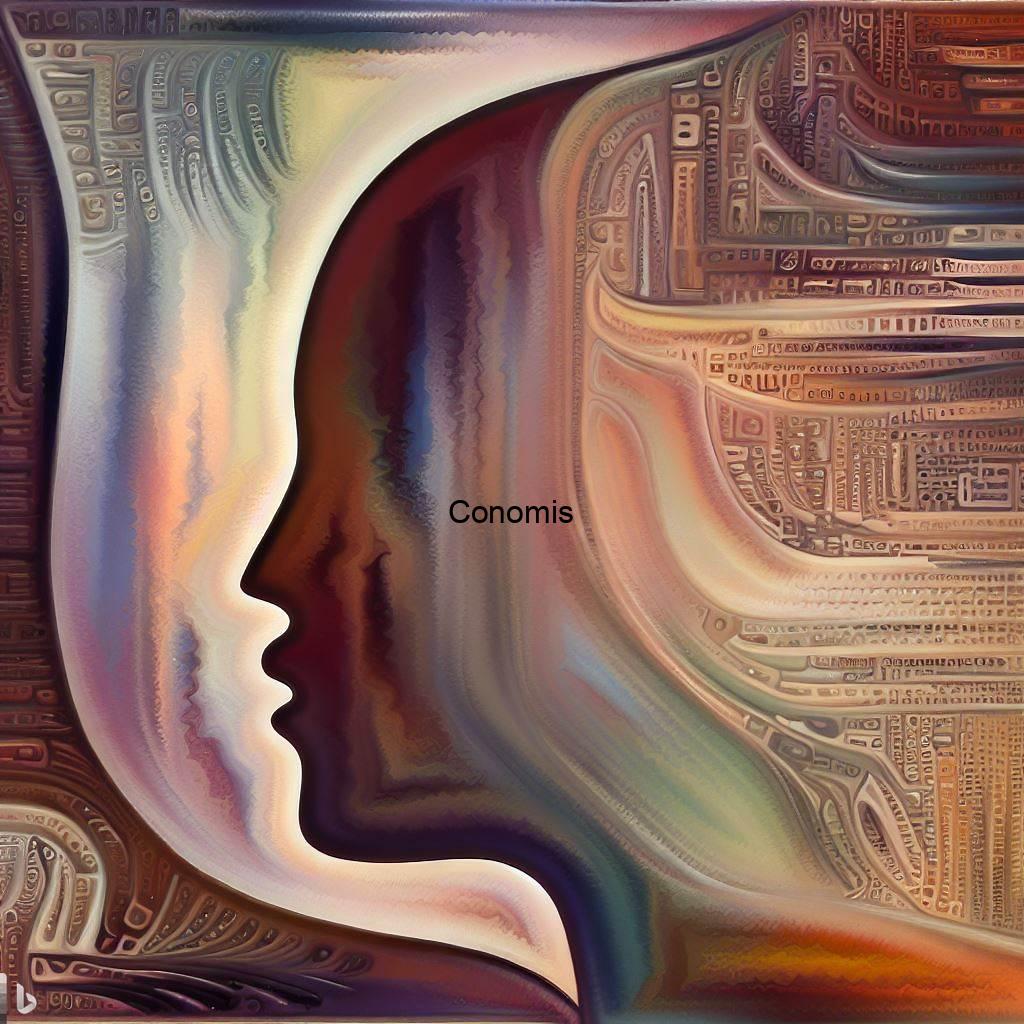Table of Contents
Introduction
Language functions as a core tool for human communication, facilitating the exchange of ideas, knowledge, and emotions. However, its limitations become apparent when considering exploration beyond Earth. Whether in space, on our planet, or across species, the necessity for effective communication intensifies. This article examines the language-related hurdles in space and earthly exploration and explores how Artificial Intelligence (AI) and Machine Learning (ML) might alleviate these challenges.
Language barriers present formidable obstacles in space endeavors, complicating interactions with extraterrestrial beings or astronauts from diverse linguistic backgrounds. Similarly, on Earth, language diversity can impede collaboration in various domains. The film “Arrival,” directed by Denis Villeneuve, profoundly influenced my perspective on language barriers. The movie portrays a linguist deciphering an alien language, illustrating the transformative power of communication.

AI and ML offer promising solutions. Through Natural Language Processing (NLP), these technologies enable real-time translation and cross-cultural understanding. Developing universal symbols and gestures could facilitate communication with other species. By drawing from the insights of “Arrival,” we recognize that surmounting language barriers holds the potential to reshape interactions both in space and on Earth. As we harness AI’s capabilities, we move closer to breaking down these linguistic divides, fostering meaningful connections in our explorations.
Language Barriers in Space Exploration: Navigating Communication Challenges in the Cosmos
Preface
The vast expanse of the cosmos has always intrigued humanity, propelling us to push the boundaries of exploration and understanding. Space exploration, undoubtedly a pinnacle of human achievement, has brought us closer to unraveling the mysteries of the universe. However, as we venture farther into the cosmos, we encounter a challenge that extends beyond the reach of our rockets and satellites: the barrier of language.
The Multilingual Cosmos
The universe is a tapestry woven with the threads of diversity. In our pursuit of cosmic knowledge, different countries, organizations, and space agencies engage in space exploration activities. Yet, these entities often utilize distinct languages for critical functions such as mission control, research, and communication with astronauts. The language diversity within the realm of space exploration is a reflection of our global diversity, highlighting the myriad cultures, traditions, and histories that enrich our world. However, this diversity can also give rise to miscommunications, leading to delays, misunderstandings, and even potential risks during critical space missions.

The challenge of linguistic variance is particularly evident in collaborative efforts like the International Space Station (ISS). Scientists and engineers from around the world converge on this orbiting laboratory to advance scientific understanding and exploration. However, the language barrier can hinder the seamless exchange of ideas, data, and solutions. Despite the shared objective of scientific progress, linguistic disparities can impede the efficiency of international cooperation, dampening the potential of collective insights and discoveries.
Beyond Earth: Communication in the Cosmos
As humanity sets its sights on more audacious goals, such as establishing colonies on other planets, the issue of effective communication takes on a new dimension. Imagine a scenario where we encounter extraterrestrial lifeforms. Our current modes of communication, which heavily rely on terrestrial languages, may prove insufficient to bridge the gap between human understanding and the potential modes of communication employed by alien species.

In this context, the language barrier morphs from an Earthly challenge to an interstellar hurdle. Establishing meaningful interactions with extraterrestrial beings necessitates the creation of a shared language, one that transcends not only human languages but also the barriers of species. Such a language would serve as a bridge for understanding, potentially fostering peaceful coexistence and collaborative exploration between species with vastly different origins and ways of comprehending the universe.
AI and the Quest for Universal Communication
In the face of these challenges, Artificial Intelligence (AI) and Machine Learning (ML) emerge as transformative tools that hold the potential to breach language barriers in space exploration. The integration of AI-powered translation technologies has already shown promising results in overcoming linguistic hurdles on Earth. These advancements enable real-time translation of spoken and written language, facilitating cross-cultural communication and understanding.

Furthermore, AI and ML algorithms can be harnessed to decipher and interpret extraterrestrial languages. By analyzing patterns, syntactic structures, and contextual cues, these technologies can aid in understanding and translating communications from potential alien civilizations. This offers a fascinating glimpse into the role AI could play in helping us decode the messages of the cosmos and pave the way for interstellar dialogues.
Conclusion
The language barriers that accompany space exploration represent an intricate challenge that must be addressed as humanity continues its cosmic journey. The diversity of languages, while a testament to our cultural richness, can hinder efficient collaboration and understanding within the international space community. As we contemplate the possibility of contact with extraterrestrial life, the need for a shared, species-transcending language becomes paramount.

Artificial Intelligence and Machine Learning present us with the tools to tackle these challenges head-on. From enhancing communication between humans of diverse linguistic backgrounds to potentially aiding in deciphering the languages of alien civilizations, AI’s transformative potential cannot be understated. As we gaze toward the stars and contemplate our place in the universe, the unifying force of communication, empowered by AI, holds the key to unlocking the secrets of the cosmos and forging connections that span light-years.
Embracing Diversity: Language Variance on Earth and Its Implications
Preface
The planet we call home, Earth, is a tapestry woven with a rich diversity of languages, cultures, and traditions. This intricate mosaic has shaped the way societies communicate, express themselves, and interact with the world around them. However, this linguistic diversity, while undoubtedly enriching, also presents challenges that can hinder effective communication, cooperation, and understanding among the global community.
The Melting Pot of Languages
From the bustling markets of Asia to the serene villages of Europe, Earth’s inhabitants converse in an astonishing array of languages. Each linguistic system carries with it a unique cultural heritage, encapsulating the wisdom, stories, and experiences of generations. The diversity of languages is a testament to humanity’s capacity for creativity and adaptability, allowing us to navigate the complex landscapes of our individual lives and collective histories.

Struggles and Opportunities
While linguistic diversity is a source of pride, it can also be a source of friction. Misunderstandings stemming from language barriers can lead to conflicts, both on a personal level and in the global arena. International diplomacy, trade agreements, and collaborative initiatives often grapple with linguistic hurdles that slow down progress and hinder meaningful engagement.

For global challenges that require swift and coordinated action, such as climate change, disease control, and disaster response, language diversity can be a stumbling block. In these critical situations, time is of the essence, and effective communication can be a matter of life and death. A shared language could act as a unifying force, enabling rapid responses and facilitating cooperation among nations and cultures.
The Power of a Common Language
A common language could serve as a bridge that connects individuals, communities, and nations, fostering deeper understanding and empathy. It could transcend cultural boundaries and allow for more efficient dissemination of information. In the face of urgent global issues, a common language would enable experts, researchers, and policymakers from different corners of the world to exchange ideas seamlessly, pool resources, and formulate collective strategies.

Furthermore, a shared language could amplify the impact of cultural exchange and collaboration. It would open doors for people to explore and appreciate the diverse perspectives, histories, and traditions of others, while also forging stronger bonds of unity. In a world that is increasingly interconnected, such a language could be a catalyst for enhanced global solidarity.
Challenges and Considerations
While the concept of a common language sounds promising, its implementation is not without challenges. The preservation of linguistic and cultural heritage is a paramount concern. Native languages carry the identity and heritage of communities, and any move towards a common language should be mindful of preserving these invaluable treasures.

Moreover, the adoption of a common language should be a collaborative effort that respects the contributions of all cultures. It should not favor one linguistic group over another, but rather celebrate the multiplicity of languages while recognizing the need for efficient global communication.
Conclusion
Language diversity is one of Earth’s most beautiful aspects, reflecting the myriad ways humanity has evolved and thrived. While it may pose challenges in terms of global cooperation, the potential benefits of a common language for addressing urgent global issues cannot be overlooked. As we navigate a world intertwined by technology and connectivity, finding a balance between preserving linguistic heritage and fostering effective communication will be key to harnessing the full potential of our diverse yet interconnected global society.

In Pursuit of Unity: The Universal Language Conundrum
Preface
The notion of a universal language has persisted throughout history, driven by the noble aspiration of promoting harmonious communication across cultures and borders. Various endeavors, including creations like Esperanto, have sought to bridge linguistic gaps and facilitate global understanding. Yet, the road to establishing such a language on a global scale is fraught with complexities. Striking a balance between the preservation of linguistic diversity and the practicality of unified communication presents a multifaceted challenge.
Historical Pursuits
Humanity’s fascination with a universal language dates back centuries, fueled by the desire to overcome language barriers that impede cross-cultural exchanges and international cooperation. Constructed languages like Esperanto, designed with simplicity and neutrality in mind, aimed to transcend linguistic boundaries. However, these attempts have often faced resistance and limitations, raising questions about the feasibility of adopting a shared language universally.

The Emotional Tapestry of Language
Languages are not mere tools of communication; they encapsulate the cultural heritage, identity, and emotions of communities. People form deep connections with their native languages, which serve as conduits for expressing profound sentiments and preserving ancestral legacies. The emotional significance attached to languages forms a fundamental hurdle in the quest for a universal language. Convincing individuals to detach from their linguistic roots and embrace a new, neutral language demands navigating intricate emotional landscapes.

Preserving Diversity and Fostering Communication
Striking a delicate balance between the practicality of a universal language and the preservation of linguistic diversity is crucial. Every language is a repository of unique thought processes, historical narratives, and creative expressions. Safeguarding this diversity is vital for honoring human ingenuity and heritage. Yet, in an increasingly interconnected world, effective communication is imperative for addressing global challenges and nurturing collaboration.
Challenges and Considerations
Implementing a universal language requires addressing intricate challenges. It necessitates overcoming language-based prejudices and biases that have deep cultural roots. Moreover, it entails devising an unbiased approach that doesn’t favor one linguistic group over another. The very essence of a universal language is neutrality, ensuring that no culture or community feels marginalized.
Conclusion
The pursuit of a universal language is a testament to humanity’s yearning for unity and understanding. While historical attempts and contemporary advancements in technology offer glimpses of the potential, the challenges are formidable. The emotional ties people have with their native languages and the intricate web of cultural richness they embody cannot be ignored. Striving for a common language demands a delicate balance between practicality and respect for linguistic diversity. The path forward necessitates open dialogues, cultural sensitivity, and a shared vision of a world where communication bridges gaps without erasing the remarkable mosaic of languages that define our human experience.

AI and ML: Unleashing Universal Communication
Preface
Artificial Intelligence (AI) and Machine Learning (ML) are not just technological advancements; they are transformative tools that hold immense potential to dissolve the barriers of language that have hindered human interaction and exploration. These groundbreaking technologies are poised to revolutionize the way we communicate, bridging gaps between languages, cultures, and even species.
Breaking the Language Barrier on Earth
In our everyday interactions, AI and ML are already reshaping communication dynamics. Translation apps and platforms, infused with the power of AI, are rendering language barriers increasingly obsolete. They facilitate seamless conversations between individuals who speak different languages, opening doors to cross-cultural understanding and collaboration. Whether it’s travelers navigating foreign lands or global business negotiations, AI-driven translation services are transforming how we connect.

Moreover, the adaptability of AI-powered tools to various contexts means that these technologies can be tailored to specialized domains. In the realm of space exploration, AI-driven language solutions can be fine-tuned for the intricacies of space terminology. International missions involving scientists, engineers, and astronauts from diverse linguistic backgrounds can now communicate with precision and clarity, enhancing the efficiency and safety of space missions.
Decoding the Cosmic Lexicon
Looking beyond our planet, AI and ML offer tantalizing possibilities for decoding extraterrestrial languages. The prospect of encountering intelligent life forms beyond Earth is both exciting and challenging. While we have no prior understanding of how potential extraterrestrial languages might work, AI and ML hold the promise of deciphering and comprehending languages that are fundamentally different from our own.
These technologies are uniquely suited for this task due to their ability to recognize patterns, analyze data, and learn from information presented to them. When confronted with signals or communications from an alien civilization, AI could be employed to decipher meaning, infer intentions, and potentially establish a basis for communication. This represents a significant step forward in our quest to make contact with extraterrestrial life and learn from their experiences and knowledge.
Fostering Mutual Understanding
One of the most remarkable aspects of AI and ML in the context of universal communication is their potential to foster mutual understanding. As these technologies enable us to decode and interpret potentially alien languages, they could facilitate the exchange of ideas, information, and perhaps even emotions with extraterrestrial beings. This potential for interstellar dialogue opens doors to collaborative learning and cooperation on an unprecedented scale.

Conclusion
Artificial Intelligence and Machine Learning are poised to catalyze a new era of communication. By dismantling language barriers here on Earth and potentially extending their reach to interstellar interactions, these technologies offer a glimpse into a future where language is no longer a limiting factor. As we embrace AI and ML as enablers of universal communication, we take bold steps toward a world where understanding and collaboration transcend linguistic, cultural, and even cosmic divides.
Creating a Common Language with AI and ML
Creating a truly universal language, understandable by all creatures on Earth and potentially beyond, is an ambitious goal. AI and ML can aid in this endeavor by analyzing commonalities in communication across species. Studying nonverbal communication, visual cues, and shared emotional expressions can provide insights into building a language that transcends linguistic and species boundaries.

Ethical Considerations and Caution
While AI and ML offer exciting possibilities, there are ethical concerns to address. Developing a shared language should be approached with cultural sensitivity, respecting the value that existing languages hold for various communities. Additionally, the unintended consequences of universal communication should be considered, including potential ecological disruptions or conflicts with alien species.

Conclusion
Language barriers have long been obstacles to effective communication and cooperation, both on Earth and in the realm of space exploration. While the creation of a universal language is a complex and multifaceted challenge, advancements in AI and ML bring us closer to realizing this goal. These technologies can revolutionize the way we communicate, fostering a more connected and collaborative world, while also potentially enabling communication with extraterrestrial life. As we tread this path, it’s vital to approach the journey with cultural sensitivity, ethical caution, and a deep appreciation for the power of language in shaping our understanding of the universe.

FAQ
What role does language play in human communication?
Language serves as a pivotal tool in human communication, enabling the sharing of ideas, knowledge, and emotions. Its importance becomes particularly evident in situations requiring effective communication, such as space exploration or cross-species interactions on Earth.
How do language barriers impact space exploration and collaboration on Earth?
In space endeavors, language barriers can complicate interactions with extraterrestrial beings or astronauts from different linguistic backgrounds. Similarly, on Earth, the diversity of languages can hinder collaboration across various sectors and regions.
How does the film “Arrival” relate to the topic of language barriers?
“Arrival,” directed by Denis Villeneuve, delves into the challenge of deciphering an alien language and showcases the transformative potential of overcoming communication obstacles. The film offers a deep reflection on the power of language and its importance in establishing connections.
What solutions do AI and ML offer in addressing language challenges?
AI and ML, especially through Natural Language Processing (NLP), have the potential to provide real-time translation services, facilitating cross-cultural understanding. They could also aid in the creation of universal symbols and gestures that might be used for communication with different species or beings.
How might surmounting language barriers change our interactions in space and on Earth?
Overcoming language barriers can revolutionize how we interact, fostering more meaningful connections during space explorations and cross-cultural collaborations on Earth. Harnessing AI’s capabilities can help us bridge these linguistic divides, promoting better understanding and collaboration.
You Can Also Read
https://www.centific.com/how-artificial-intelligence-overcomes-language-barriers
Conomis Thoughts
![]() Copyright 2023 CONOMIS
Copyright 2023 CONOMIS


hello!,I really like your writing so much! proportion we keep up a correspondence more approximately your post on AOL? I require a specialist in this area to unravel my problem. Maybe that’s you! Taking a look ahead to see you.
I couldn’t resist commenting
This is the suitable blog for anyone who wants to find out about this topic. You notice so much its nearly laborious to argue with you (not that I truly would need…HaHa). You positively put a brand new spin on a topic thats been written about for years. Great stuff, simply nice!
fantastic post.Never knew this, thanks for letting me know.
I simply could not depart your web site prior to suggesting that I really loved the usual information an individual provide for your visitors? Is gonna be back frequently in order to check out new posts.
Hi, Neat post. There’s a problem with your web site in internet explorer, would test this… IE still is the market leader and a large portion of people will miss your excellent writing because of this problem.
You have observed very interesting points! ps decent internet site. “Every man over forty is a scoundrel.” by George Bernard Shaw.
Lovely site! I am loving it!! Will come back again. I am taking your feeds also.
I dugg some of you post as I cogitated they were very beneficial very useful
Excellent blog! Do you have any tips and hints for aspiring writers? I’m planning to start my own site soon but I’m a little lost on everything. Would you suggest starting with a free platform like WordPress or go for a paid option? There are so many choices out there that I’m totally overwhelmed .. Any tips? Appreciate it!
naturally like your web-site but you need to check the spelling on quite a few of your posts. A number of them are rife with spelling issues and I to find it very troublesome to inform the reality then again I will certainly come again again.
Hey! This is my 1st comment here so I just wanted to give a quick shout out and say I truly enjoy reading your posts. Can you suggest any other blogs/websites/forums that deal with the same subjects? Thank you!
I was curious if you ever thought of changing the page layout of your website? Its very well written; I love what youve got to say. But maybe you could a little more in the way of content so people could connect with it better. Youve got an awful lot of text for only having 1 or two images. Maybe you could space it out better?
I love your writing style genuinely loving this website .